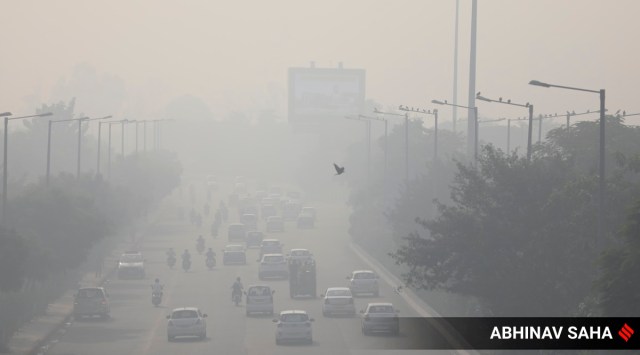Greater Noida to be divided into 8 zones to tackle pollution
The zone workers will be recommending action against builders if they are found to be violating NGT norms. The department will also work in coordination with police as employees have been asked to alert traffic officials if a jam is spotted at a particular stretch.
 Pollution along the Delhi-Greater Noida Expressway. (Express Photo by Abhinav Saha)
Pollution along the Delhi-Greater Noida Expressway. (Express Photo by Abhinav Saha)The Greater Noida Authority will divide the region into eight zones to track pollution in the upcoming winter season.
A review meeting was held between Greater Noida Authority (GNIDA) and Pollution Board officials over the steps that will be taken in advance. A nodal officer will be appointed for each zone, officials said.
“It has been observed that pollution levels spike during the winter season. It will be effective if the pollution control measures are decided well in advance so that the groundwork can be streamlined. We are looking to cover a large area with water sprinklers. The division of the area into zones will help us coordinate better. A check will be kept on construction sites and other open sources of pollution,” said KR Varma, DGM GNIDA.
According to officials, the nodal officer of each zone will be providing a report to senior officials on the enforcement of anti-pollution rules. The Authority is looking to deploy anti-smog guns at construction sites larger than 20,000 sq metres along with water sprinklers to neutralise dust.
The zone workers will be recommending action against builders if they are found to be violating NGT norms. The construction sites have marginally higher participation in spreading air pollution, officials said. The department will also work in coordination with police as employees have been asked to alert traffic officials if a jam is spotted at a particular stretch.
Due to increased land acquisition by the government and varying crop patterns, the district faces less risk of pollution due to stubble burning. “A large portion of agricultural land has been acquired by the government for various projects. This in itself minimises the risk of burning leftover produce in this region. The pollution mostly comes from Punjab and Haryana side which also reaches Delhi first. Besides, this region does not have as much dhaan produce as neighbouring states,” said Varma.








